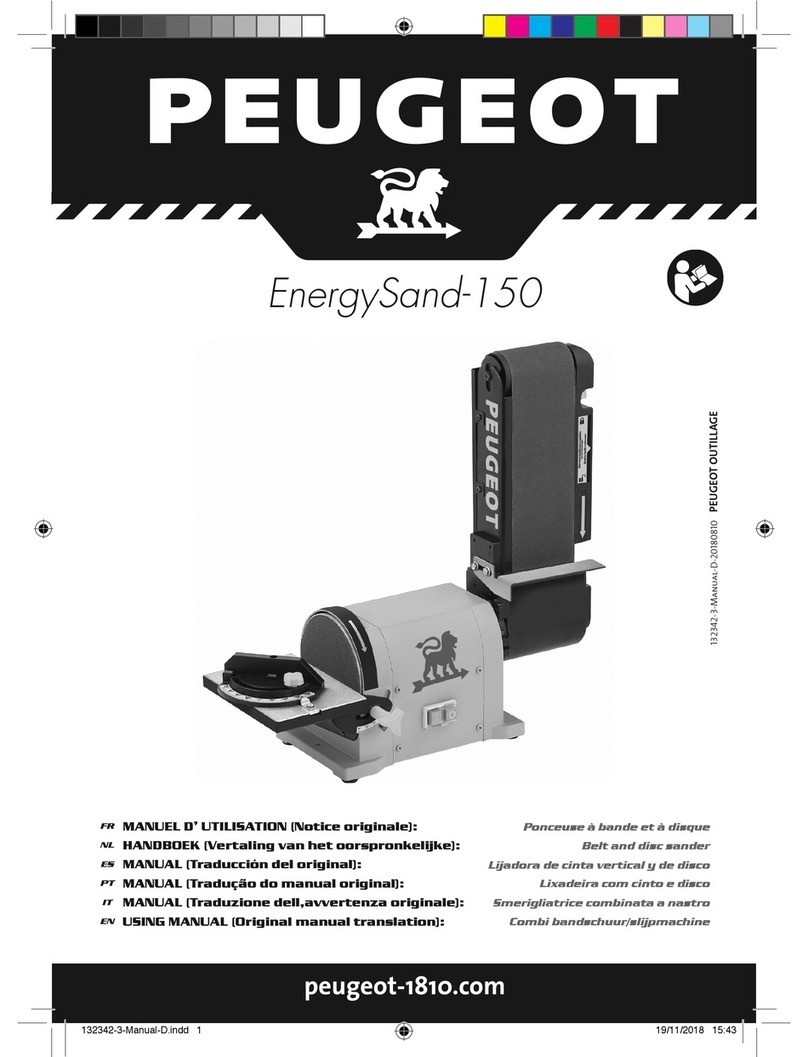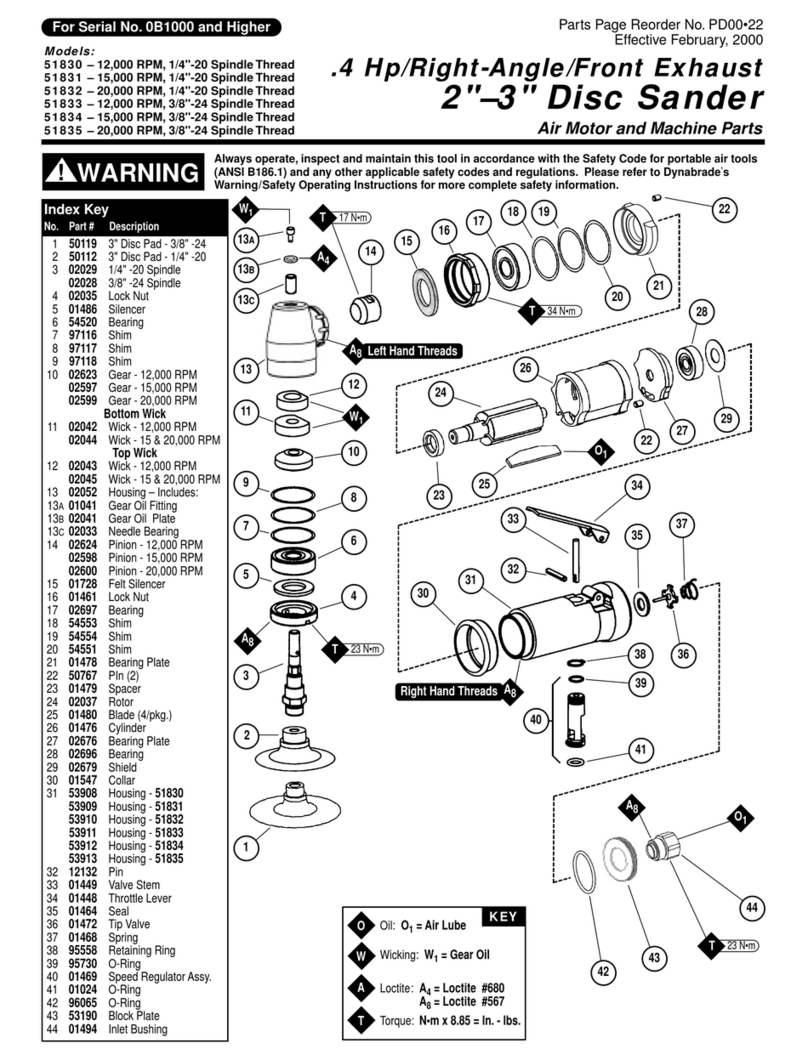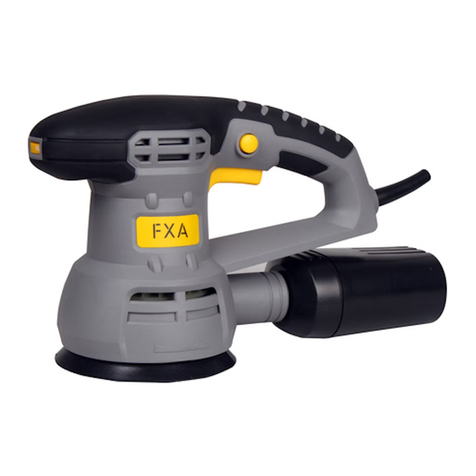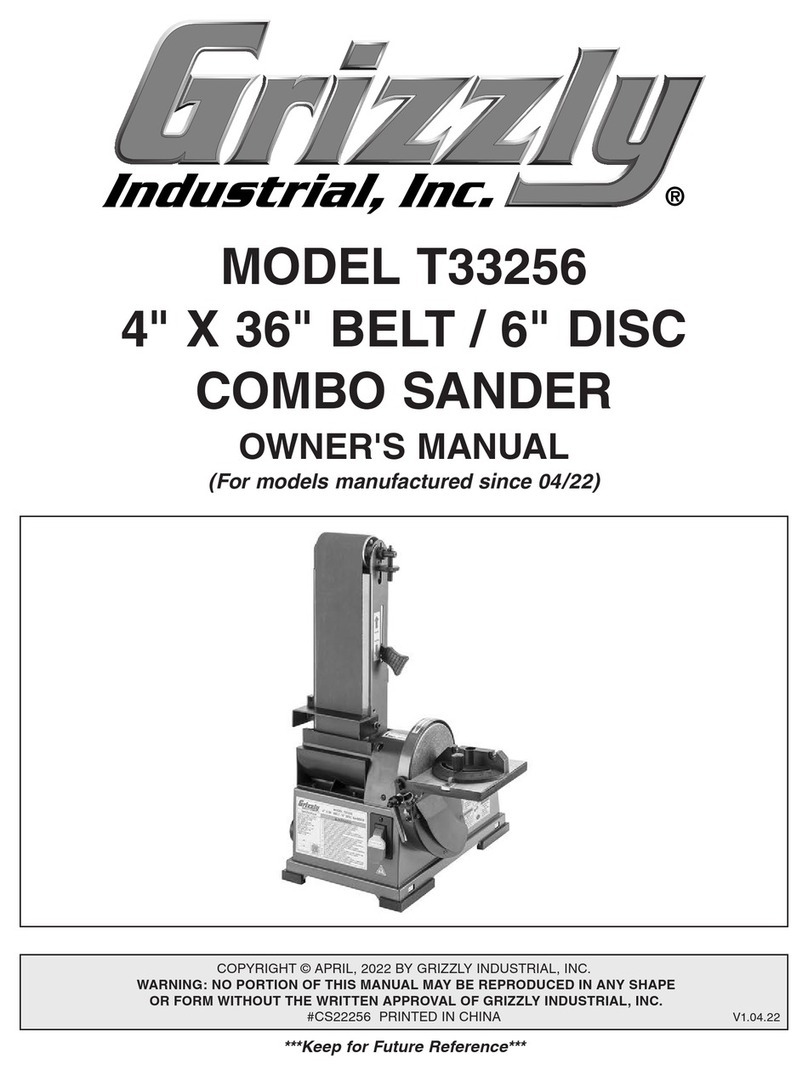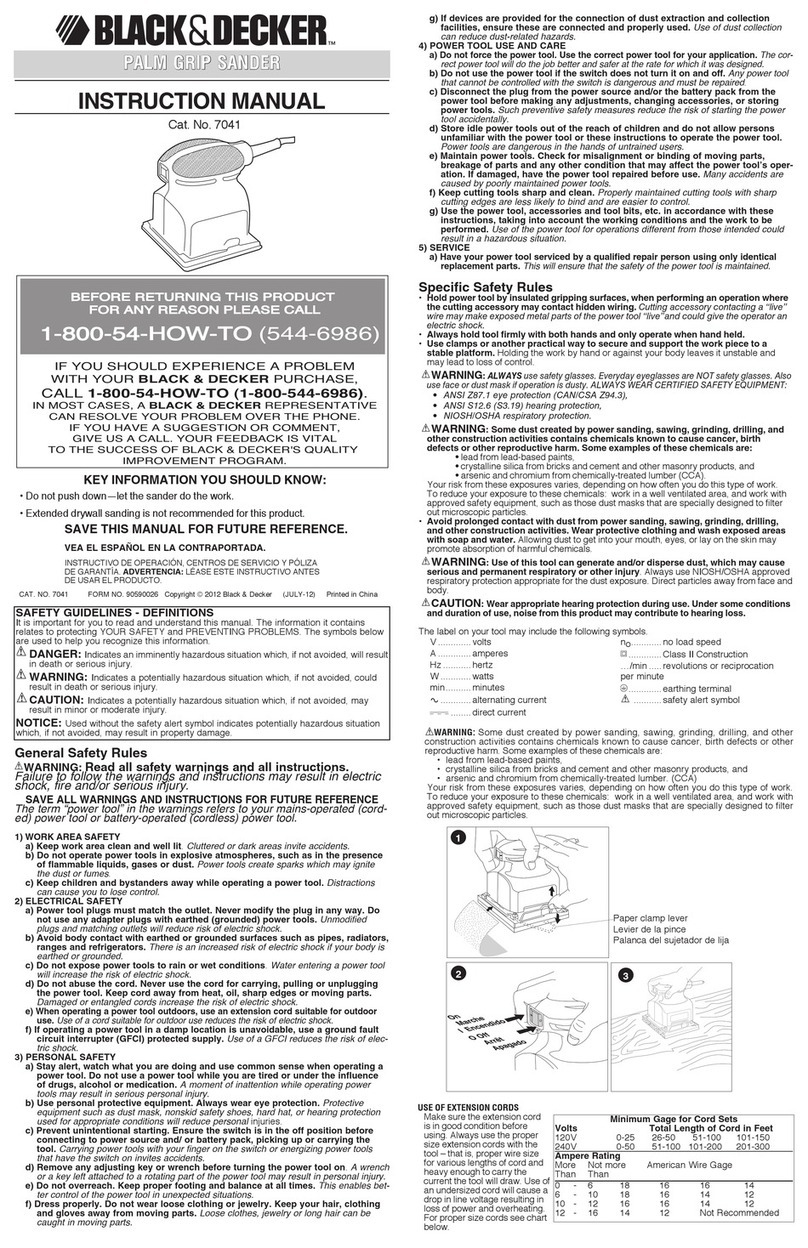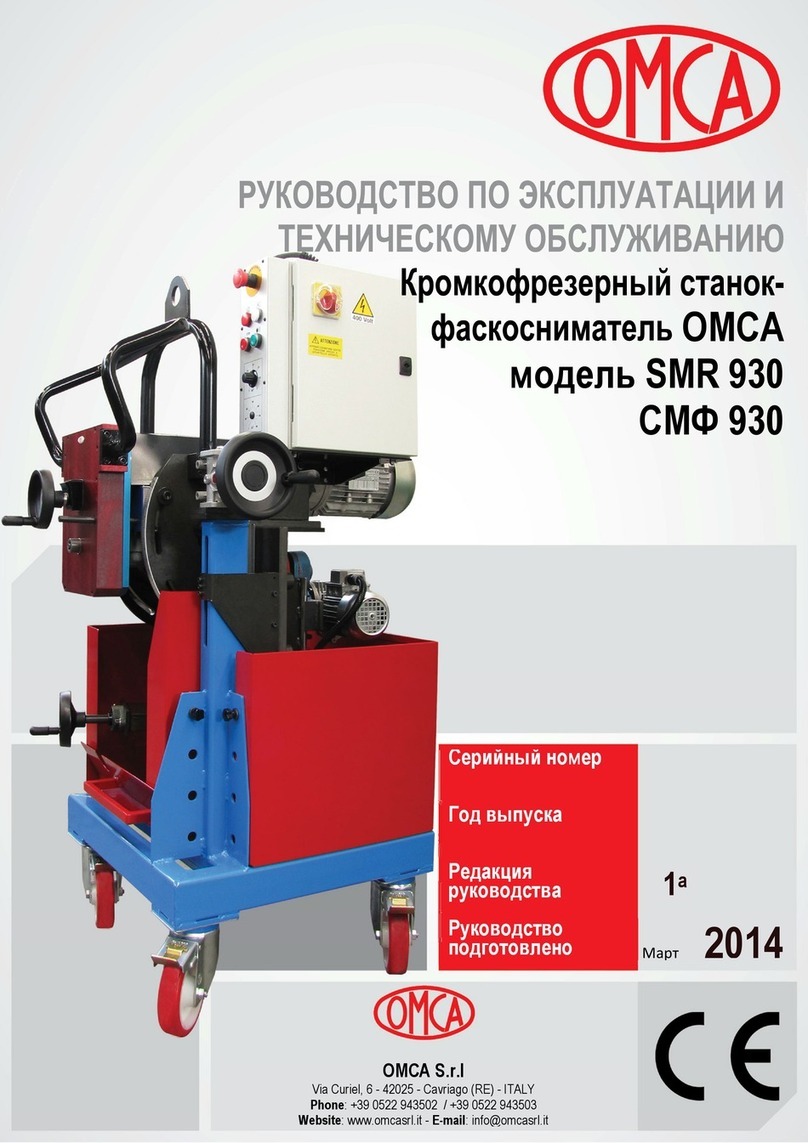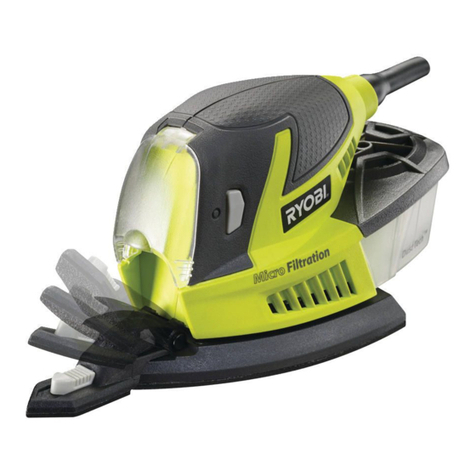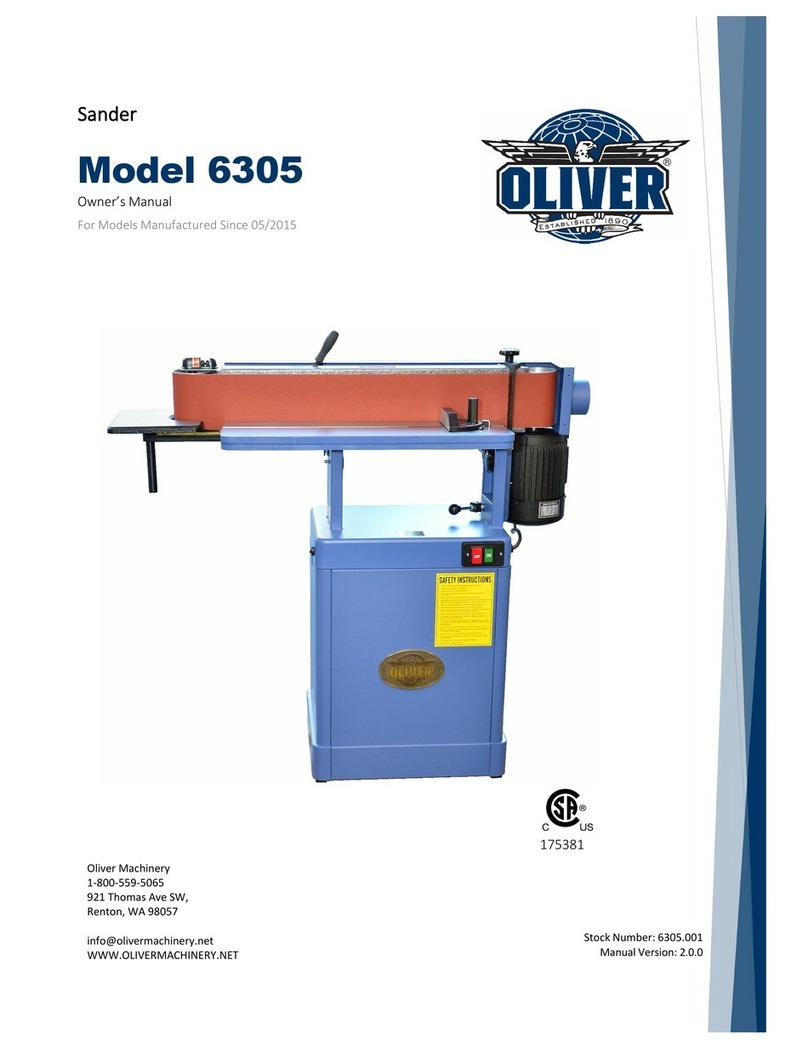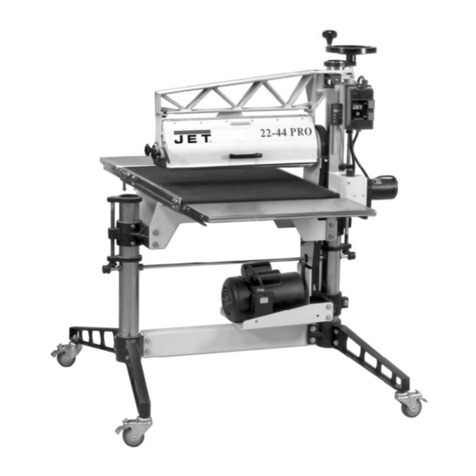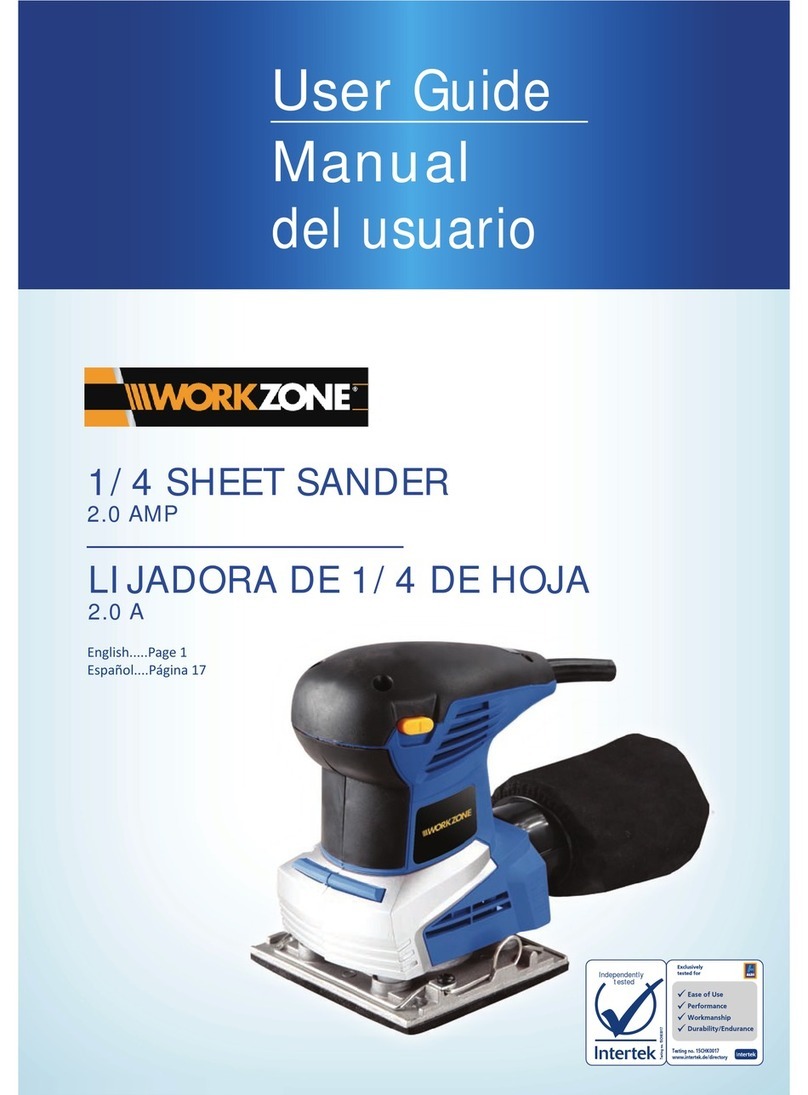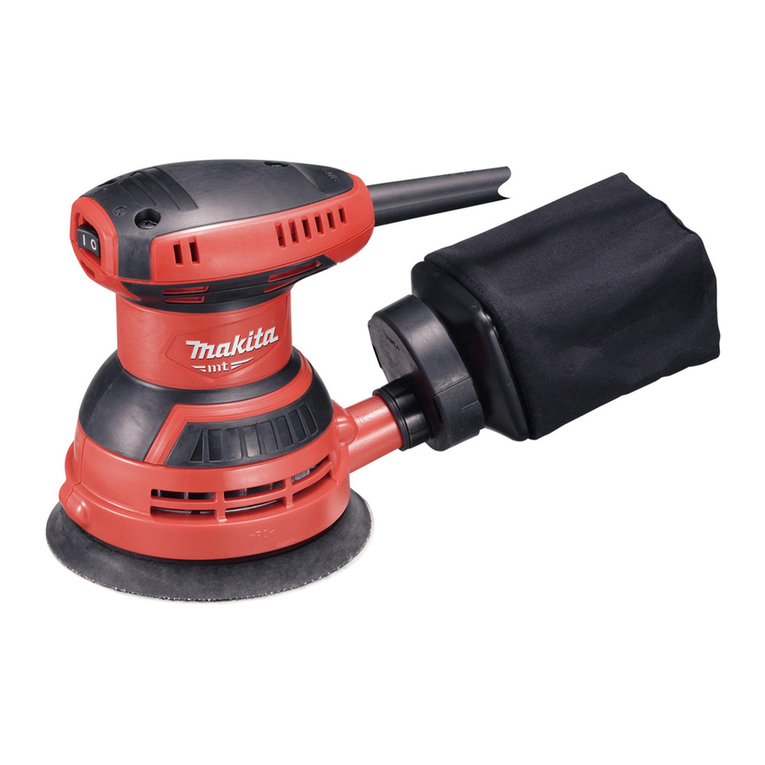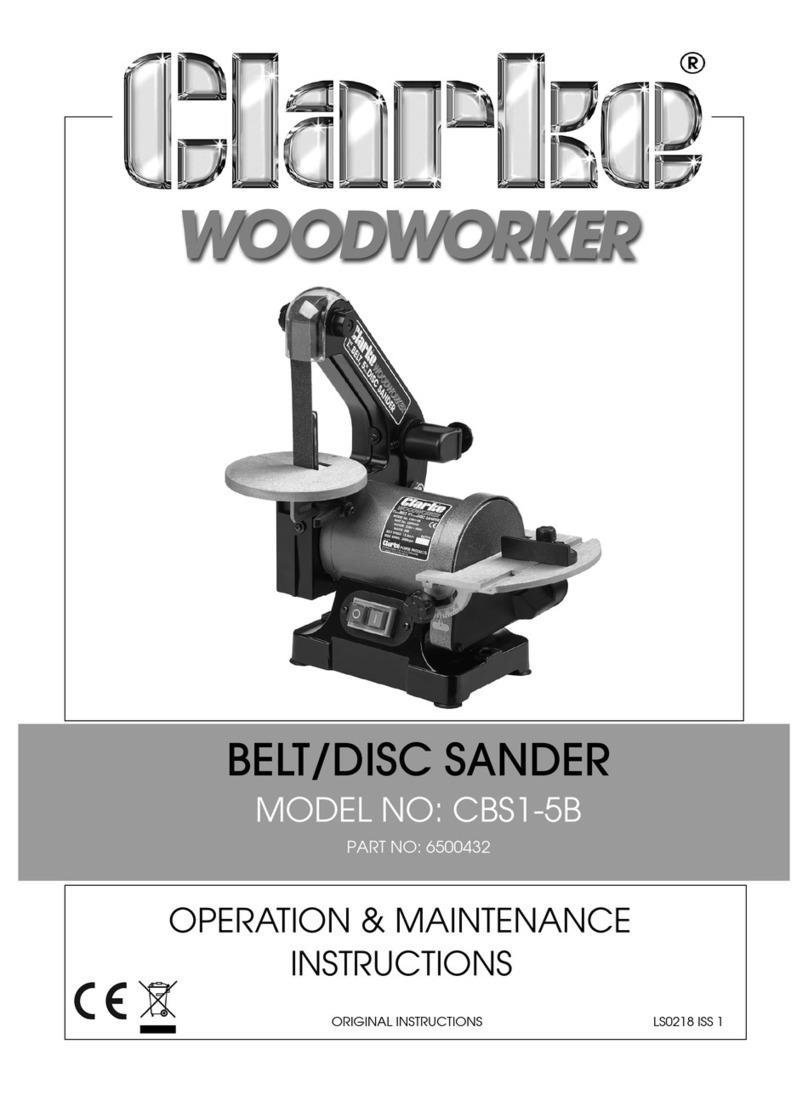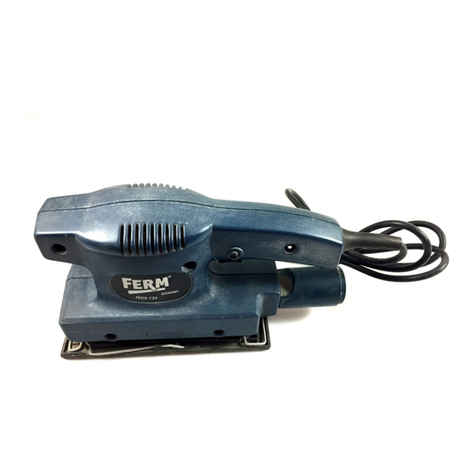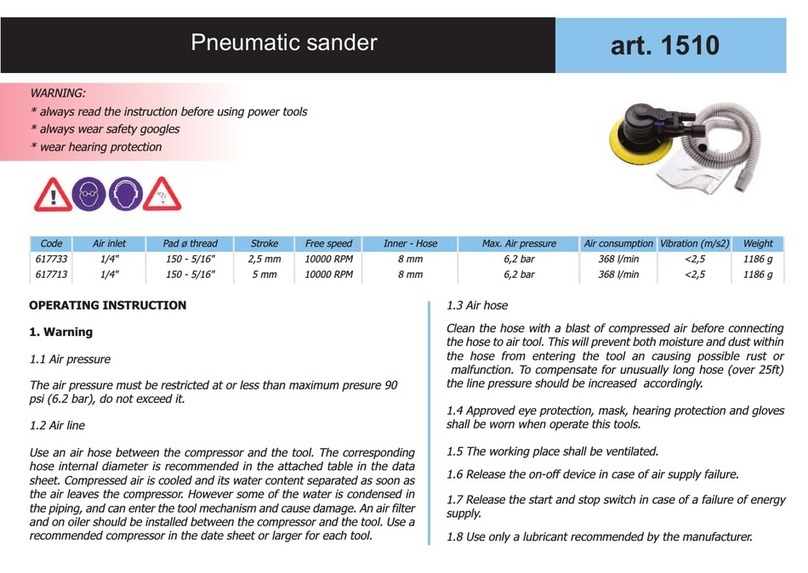
Stand und Gleichgewicht bewahren.
14. WERKZEUG SORGFÄLTIG PFLEGEN.
Schneidwerkzeug scharf und sauber halten,
damit es seine Funktion besser und sicherer
erfüllt. Anweisungen zum Schmieren und
Auswechseln von Zubehörteilen befolgen.
Elektrische Leitungen des Werkzeugs regelmäßig
prüfen und, falls sie beschädigt sind, von einem
autorisierten Kundendienst reparieren lassen.
Verlängerungsleitungen regelmäßig prüfen und, falls
sie beschädigt sind, ersetzen. Handgriffe trocken,
sauber sowie öl- und fettfrei halten.
15. WERKZEUG TRENNEN. Werkzeug von der
Stromversorgung trennen, wenn es nicht in
Gebrauch ist, bevor es gewartet wird und wenn
Zubehörteile wie Klingen, Bohrerspitzen und
Fräserköpfe ausgetauscht werden.
16. JUSTIERSCHLÜSSEL ENTFERNEN. Eine
Gewohnheit daraus machen, darauf zu achten,
dass Justierschlüssel vor dem Einschalten des
Werkzeugs entfernt sind.
17. UNBEABSICHTIGTES STARTEN VERMEIDEN.
Sicherstellen, dass der Netzschalter auf „Aus“ steht,
wenn man den Stecker anschließt.
18. FREILUFTVERLÄNGERUNGSLEITUNGEN
VERWENDEN. Wenn das Werkzeug im Freien
eingesetzt wird, nur Verlängerungsleitungen
verwenden, die für die Verwendung im Freien bestimmt
sind und eine entsprechende Markierung tragen.
19. ACHTSAM BLEIBEN. Die eigene Arbeit beobachten,
dem gesunden Menschenverstand folgen und das
Werkzeug nicht verwenden, wenn man müde ist.
20. BESCHÄDIGTE TEILE PRÜFEN. Bevor das
Werkzeug weiterverwendet wird, sorgfältig prüfen,
ob es ordnungsgemäß funktionieren und seine
vorgesehene Aufgabe erfüllen wird. Ausrichtung
beweglicher Teile, Beschläge beweglicher Teile,
Bruchstellen an Teilen, Montage und andere
Umstände, die den Betrieb beeinträchtigen können,
überprüfen. Eine Schutzvorrichtung oder andere Teile,
die beschädigt sind, durch autorisierten Kundendienst
ordnungsgemäß reparieren oder ersetzen lassen,
sofern in dieser Bedienungsanleitung keine anderen
Hinweise gegeben werden. Das Werkzeug nicht
verwenden, wenn es sich mit dem Netzschalter nicht
ein- und ausschalten lässt.
21. ACHTUNG. Die Verwendung jeglicher anderer
Zubehörteile und Zusatzgeräte als sie in dieser
Bedienungsanleitung empfohlen werden, kann eine
Gefahr von Körperverletzungen darstellen.
22. WERKZEUG NUR VON EINER FACHKRAFT
REPARIEREN LASSEN. Dieses Elektrowerkzeug
entspricht den relevanten Sicherheitsbestimmungen.
Reparaturen dürfen nur von einer Fachkraft unter
Verwendung von Originalersatzteilen durchgeführt
werden. Ansonsten kann sich für den Benutzer eine
beträchtliche Gefahr ergeben.
23. DURCH SCHLECHTEN ZUSTAND DES
ELEKTRISCHEN LEITUNGSNETZES, können
kurzfristig Spannungsschwankungen auftreten wenn
die Maschine gestartet wird. Dies kann andere Geräte
beeinußen (z.B. aueuchten einer Lampe). Sollte
der Leitungswiderstand Zmax < 0.34 Ohm betragen,
sind solche Störungen nicht zu erwarten.
24.Wir empfehlen Ihnen die Maschine stets fest auf einer
Werkbank zu montieren, um eine maximale Stabilität
zu erreichen.
Allgemeine
Sicherheitsregeln
Lesen Sie diese Anweisungen vollständig
durch, bevor Sie Ihr Gerät in Betrieb nehmen.
Heben Sie diese Anweisungen zur späteren
Verwendung auf.
1. IM ARBEITSBEREICH ORDNUNG HALTEN.
Unordnung in Arbeitsbereichen und auf Werkbänken
führt leicht zu Verletzungen. Halten sie den
arbeitsbereich rund um die maschine stets sauber
und frei von losem material z.B.Späne und
Werkstoffresten.
2. AUF UMGEBUNG DES ARBEITSBEREICHES
ACHTEN. Werkzeug nicht dem Regen aussetzen.
Werkzeug nicht an feuchten oder nassen Orten
einsetzen. Für gute Beleuchtung des Arbeitsbereichs
sorgen. Kein Werkzeug in der Gegenwart leicht
entzündlicher Flüssigkeiten oder Gase verwenden.
3. SCHUTZ VOR ELEKTRISCHEM SCHLAG.
Berührung mit geerdeten Oberächen vermeiden.
4. ANDERE PERSONEN FERN HALTEN. Darauf
achten, dass andere Personen, insbesondere Kinder,
die an der Arbeit nicht beteiligt sind, das Werkzeug
oder die Verlängerungsleitung nicht berühren und
vom Arbeitsbereich fernbleiben.
5. AUFBEWAHRUNG NICHT VERWENDETEN
WERKZEUGES. Werkzeug, das nicht in Verwendung
ist, an einem trockenen Ort eingeschlossen für Kinder
unzugänglich aufbewahren.
6. DAS WERKZEUG NICHT ÜBERFORDERN. Es
erfüllt seine Funktion besser und sicherer, wenn es
mit der vorgesehenen Leistung betrieben wird.
7. DAS RICHTIGE WERKZEUG VERWENDEN.
Keinem kleinen Werkzeug die Funktion eines hoch
belastbaren Werkzeugs aufzwingen. Werkzeug nicht
für Zwecke verwenden, für die es nicht vorgesehen
ist; beispielsweise keine Kreissäge zum Schneiden
von Ästen oder Baumstämmen verwenden.
8. ANGEMESSENE BEKLEIDUNG. Keine lose
hängenden Kleidungs- oder Schmuckstücke tragen;
sie können sich in bewegten Maschinenteilen
verfangen. Bei der Arbeit im freien ist rutschsicheres
Schuhwerk zu empfehlen. Lange Haare mit einer
Mütze oder einem Haarnetz schützen.
9. SICHERHEITSZUBEHÖR VERWENDEN.
Schutzbrille tragen. Gesichts- oder Staubmaske
tragen, wenn bei Schneidvorgängen Staub entsteht.
10. STAUBABSAUGUNGSANLAGE ANSCHLIESSEN.
Wenn Geräte mit dem Anschluss für eine Vorrichtung
zum Absaugen und Sammeln von Staub ausgestattet
sind, sicherstellen, dass diese angeschlossen ist und
bestimmungsgemäß eingesetzt wird.
11. KABEL NICHT ÜBERMÄSSIG BEANSPRUCHEN.
Niemals am Kabel ziehen, um den Stecker aus der
Steckdose zu ziehen. Kabel von Wärmeeinwirkung,
Öl und scharfen Kanten fern halten.
12. WERKSTÜCK SICHERN. Wenn möglich, Werkstück
mittels Klemmen oder Schraubstock festhalten. Das
ist sicherer, als es mit der Hand zu halten.
13. SICH NICHT ZU WEIT AUSSTRECKEN. Stets festen
ACHTUNG! Beim Einsatz von Elektrowerkzeug sind
stets grundlegende Sicherheitsvorkehrungen zu
treffen, um der Gefahr von Brand, elektrischem Schlag
und gefährlichen Körperverletzungen vorzubeugen.





